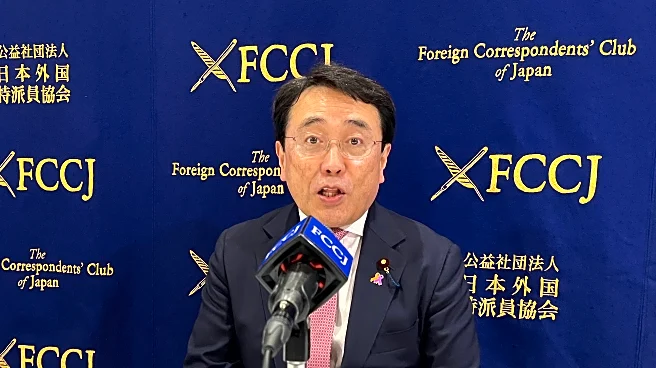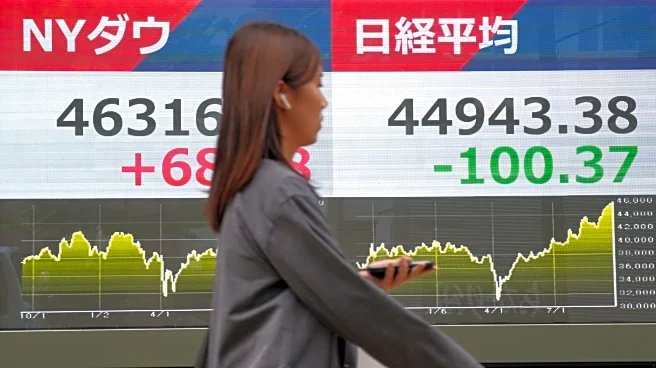What's Happening?
The US manufacturing sector has experienced contraction for 33 out of the last 35 months, according to the latest Purchasing Managers Index (PMI) report from the Institute for Supply Management (ISM). The PMI for September was recorded at 49.1, slightly up from 48.7 in August, but still below the 50 mark that indicates expansion. This prolonged period of contraction follows a brief expansion in January and February, which was preceded by a 26-month stretch of contraction. The report highlights ongoing macroeconomic challenges, including interest-rate management and tariffs, which continue to affect customer purchasing decisions and production rates. Despite the manufacturing sector's struggles, the overall US economy has continued to expand for 65 consecutive months, with the PMI indicating a general economic expansion when above 42.3 over time.
Why It's Important?
The persistent contraction in the US manufacturing sector is significant as it reflects broader economic challenges that could impact various stakeholders, including businesses, workers, and policymakers. Manufacturing is a critical component of the US economy, contributing significantly to GDP and employment. The sector's struggles could lead to reduced economic growth, affecting job creation and income levels. Additionally, the impact of tariffs and interest rates on production costs and customer purchasing decisions could lead to increased prices for goods, affecting consumer spending and overall economic stability. Businesses may face higher operational costs, leading to potential layoffs or reduced investment in growth initiatives.
What's Next?
The future of the US manufacturing sector will likely depend on how macroeconomic conditions evolve, particularly regarding interest rates and trade policies. Policymakers may need to consider measures to support the sector, such as reducing tariffs or providing incentives for domestic production. Businesses may need to adapt by exploring cost-saving measures or diversifying their supply chains to mitigate the impact of tariffs and rising production costs. The sector's performance will be closely monitored, as any signs of recovery could signal broader economic improvements.
Beyond the Headlines
The ongoing contraction in the manufacturing sector raises questions about the long-term sustainability of current economic policies and their impact on domestic industries. The reliance on tariffs as a trade policy tool may need reevaluation, as it appears to be contributing to increased production costs and reduced competitiveness for US manufacturers. Additionally, the sector's struggles highlight the need for investment in innovation and technology to enhance productivity and reduce dependency on external factors. The situation also underscores the importance of workforce development and training programs to equip workers with skills needed in a rapidly changing economic landscape.












